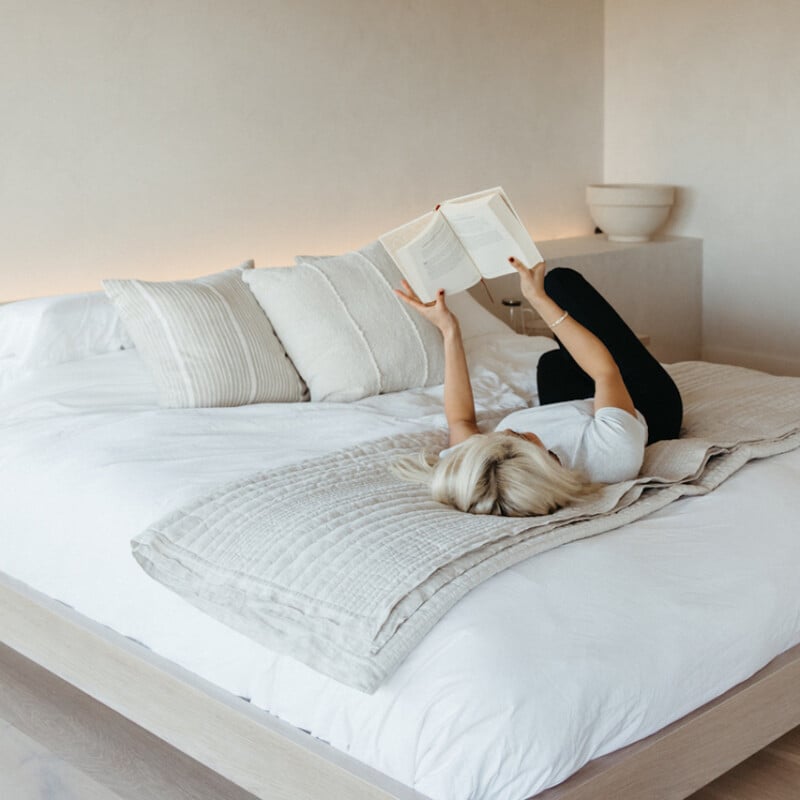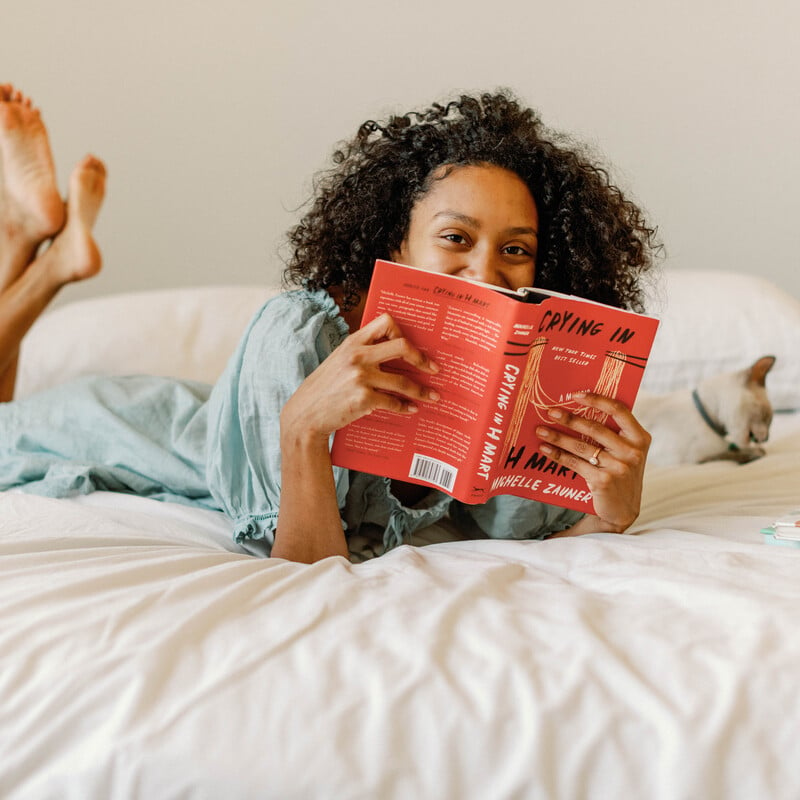Lifestyle
5 Tips to Build More Confidence, According to a Confidence Coach

I’ve always felt like the wrong kind of person. I was halfway through Annabel Monaghan’s beach read, Summer Romance when I came across these words. Up until this point, the book had been breezy and light—an entertaining escape from my every day. But I stopped when I came to that sentence, arrested by its truth and resonance. Like many, I’ve always felt a bit awkward and unsure of what to say or how to act in social situations. It’s why I’ve always leaned into etiquette, understanding the arbitrary rules as a roadmap for life. However, as I’ve gotten older, I’ve seen the importance of trusting my own capabilities and embracing a quiet sort of confidence. For guidance, I sought answers in a confidence coach—and I’m obsessed with what she shared.
Featured image from our interview with Iskra Lawrence by Michelle Nash.

How to Be Confident—Tips From a Confident Coach Herself
For women especially, confidence—or a lack thereof—extends to every part of our lives. It defines how we feel about our bodies, our friendships, and our careers (imposter syndrome, anyone?). And because we’ve been conditioned to make ourselves smaller in every sense, connecting with our innate sense of confidence not only feels like a challenge. Much of the time, it can seem impossible.
I connected with Daniela Russo, a life and confidence coach based in Amsterdam, not only because of her expertise and training, but what her personal story reveals about the reality of confidence. When I ask Russo what her journey with confidence has looked like, she describes an experience that many women can relate to. She remembers not feeling special or “good enough.”
But she had always worked hard in pursuit of her goals, and when she moved to Rome for university, her efforts began paying off. Pairing her goals with an action plan—a method fixed on plan A, plan B, etc.—she had proof that making her dreams come true required the “right effort and determination.” That, Russo says, is when she started to believe in herself.
It’s evidence that confidence is a practice and something we can all build for ourselves. Ahead, Russo shares tips for finding your unique voice, putting your value forth, and stepping into every area of your life with confidence.

Daniela Russo
Daniela Russo is a Life Coach coach based in Amsterdam. After a successful career as lawyer and more than 15 years working around the world in humanitarian aid organizations she decided to dedicate myself to the coaching business and help people in their quest of meaning. She is a certified Master Practitioner of Neuro-Linguistic Programming®, using a combination of NLP techniques, tests, exercises and guided meditations. Over the past years, she has supported hundreds of people to find more clarity in their life and reconnect with themselves, increasing the sense of confidence and trust in their own abilities. Daniela has worked with entrepreneurs, doctors, psychologists, coaches, teachers and people from different backgrounds.
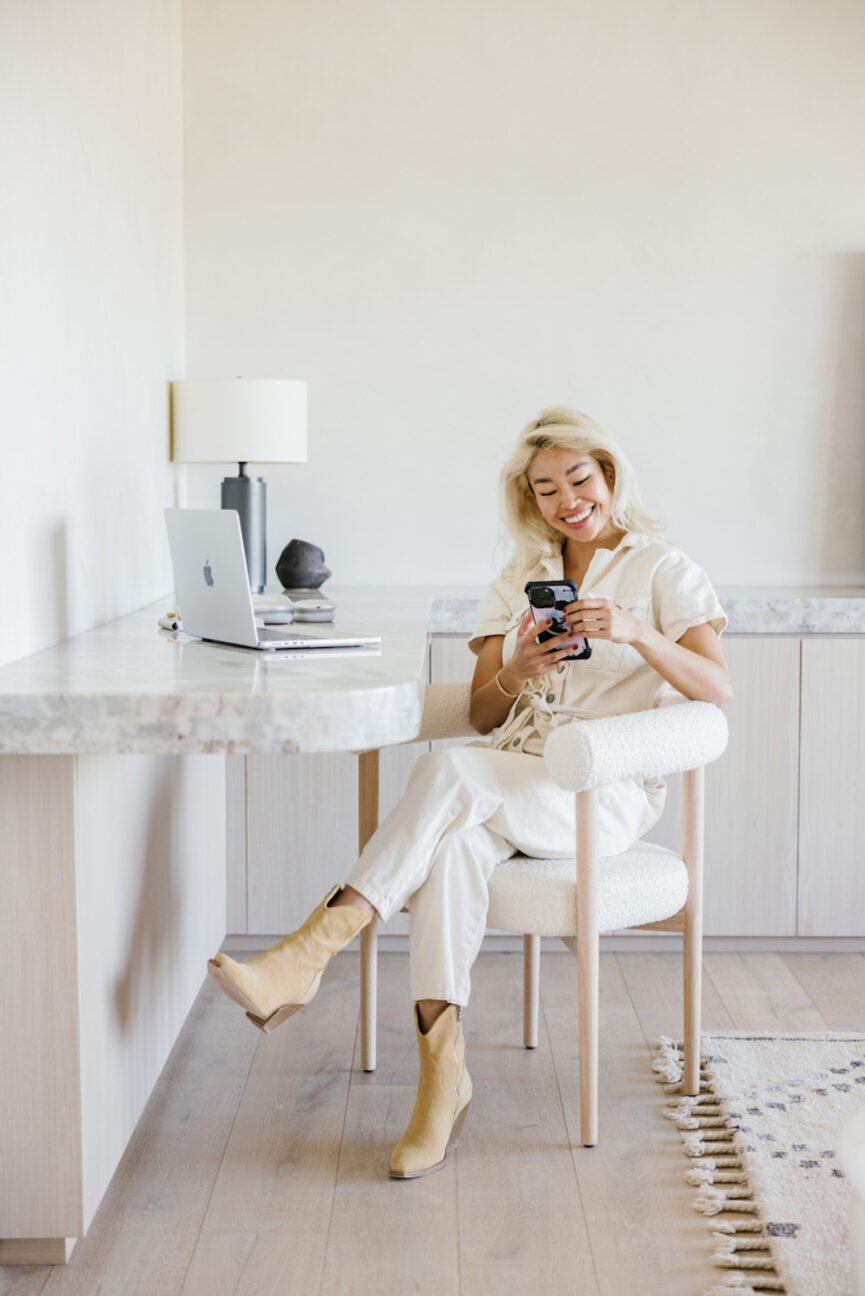
How do you define confidence? What does life feel like when you’re living in the realm of confidence?
There are so many misconceptions about confidence. It’s often conflated with self-esteem or thought to be an innate personality trait. (Either you’re born with it or you’re not.) But Russo defines it perfectly, telling me that “confidence is not something you have—it’s something you create.” And to the skeptics, she adds this uplifting note: you can create confidence at any moment.
“Confidence is a sense of power within yourself, a sense of certainty that you can do it,” Russo asserts. She adds that no one has a baseline, constant confidence. Instead, she describes the key as being able to turn it on and tap into your confidence when you need it.
The Success Cycle and the Power of Your Beliefs
Your beliefs are one of the key factors that impact your confidence, says Russo. If you’re well-equipped to do something but say to yourself: I’ve never done this before so I probably won’t succeed, it’s unlikely that you’ll tap into your potential.
She relates this to the Success Cycle, which is a model for explaining why success begets more success and failure breeds failure. Russo illustrates the momentum behind your beliefs and how it can get you on the path to success—and stay there.
When you fail, your brain will look back on this moment as proof—essentially saying See, I told you. That begins to build a cycle and can establish a reinforcing belief pattern. Your brain points back to that experience as truth, and in turn, you believe less in yourself and becomes all the more challenging to engage your potential and take action. “You get even worse results,” says Russo, “and now you’re truly locked into the downward spiral.”
But, she’s quick to add—this also works in the reverse. “When you know you’ll succeed, you will tap into more potential and take more action. From there, you get great results.”
Just as the Success Cycle can push you further into the cycle of failure, it can also yield positive results. “At this point, your belief system says, I will be successful at whatever I do. Whatever I do will yield great results.
“Your beliefs become even stronger. Now that you’re in that success cycle, it will drive you to a whole new level. That’s how beliefs are formed.”
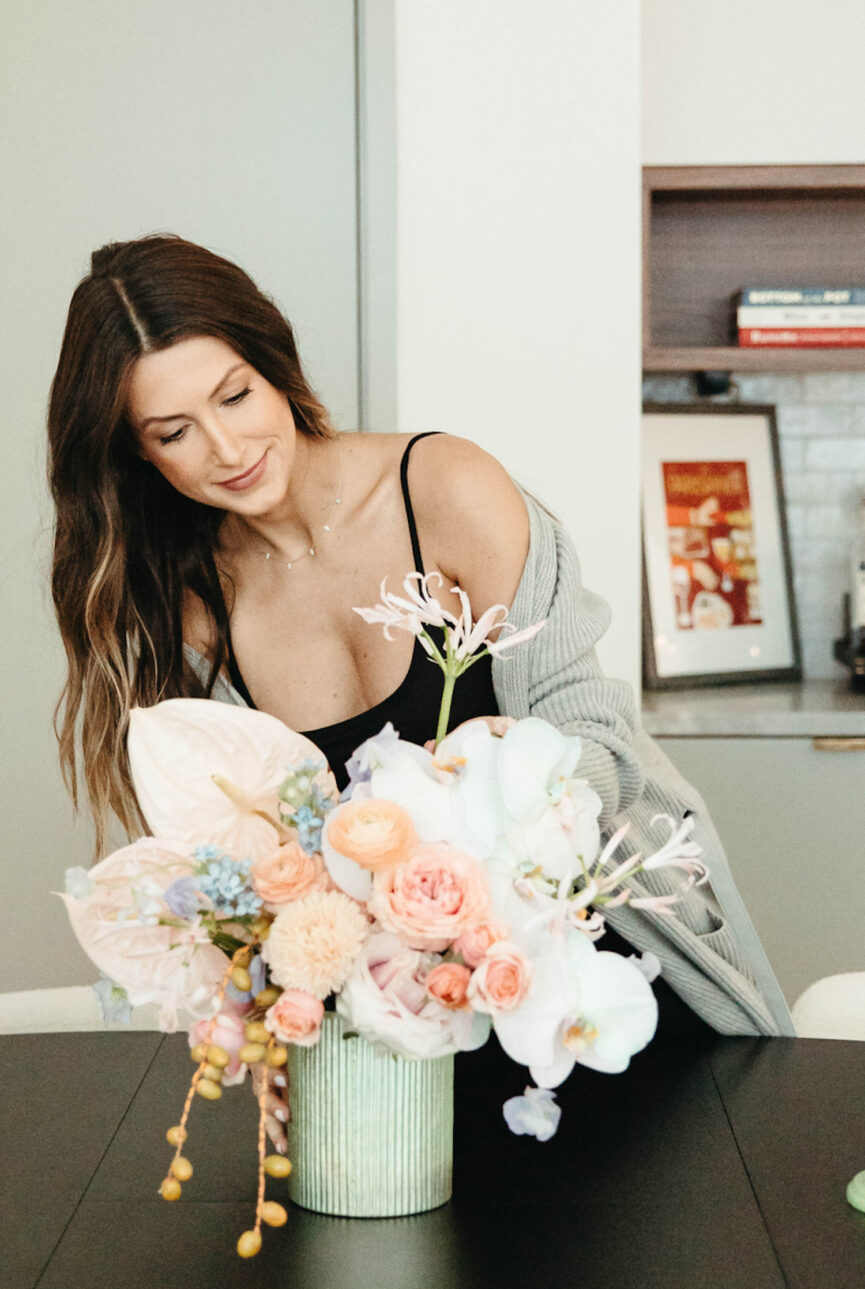
What can people expect from working with a confidence coach?
“A confidence coach can help you stop doubting yourself and your abilities,” says Russo. She notes several of the other benefits of working with a confidence coach:
- You can learn to set clear boundaries and improve your communication skills.
- You can face daily challenges with ease.
- You may feel happier in life and more fulfilled in your career.
- You’ll learn how to better control your emotions, and overcome fears and limiting beliefs.
- By the end of the coaching process, you will care less about what others think of you.
Signs You May Need to Work With a Confidence Coach
- You compare yourself to others and feel your peers are better than you.
- You feel insecure about yourself and doubt your abilities despite any successes.
- You put pressure on yourself to meet your very high standards.
- You are often afraid to speak up in meetings at work and are scared of being judged.
- You have high expectations for yourself and even small mistakes make you question your competence.

5 Tips for Leveling Up Your Confidence, According to a Confidence Coach
Ahead, Russo shares her top five tips to help you build confidence. From there, you can experience the personal growth and professional success that a belief in yourself can bring. Once you cultivate confidence, you can approach life with certainty and lean into the joy and expansion behind every challenge.
1. Stop seeking approval
Stop seeking approval and validation. The more you seek it, the less you get it. Confident people don’t care what others think about them. Approval-seeking behavior is normal to a certain extent, but the problem begins when you start comparing yourself to other people. You will always find somebody who is better than you.
Accept that no matter what you do, somebody won’t like you. Rejection is part of your life, it’s inevitable. You will never get everyone’s validation and approval (and trying to do so can be destructive).
Make it happen: Instead, of comparing yourself to others, compare yourself against yourself. Are you doing your best? What progress have you made?
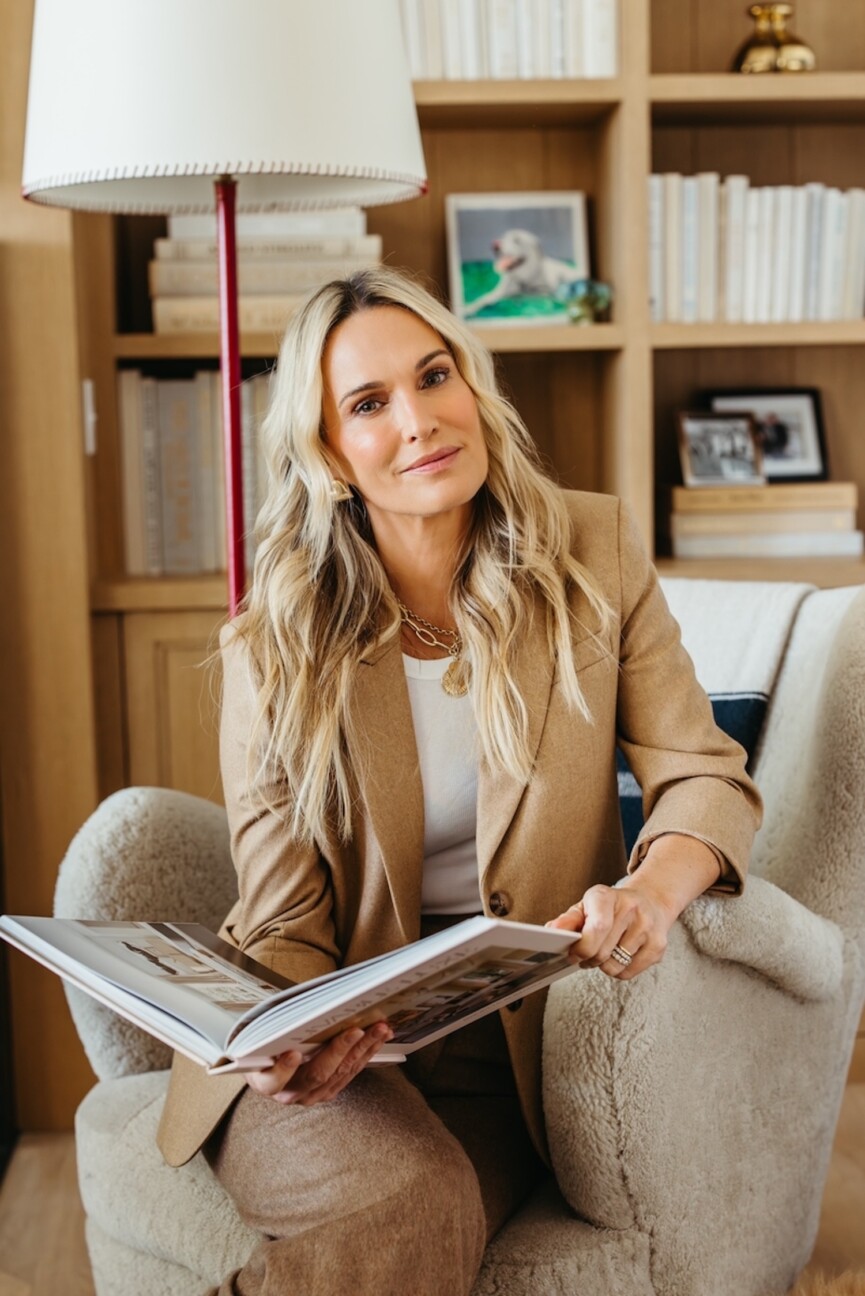
2. Push Your Comfort Zone
One of the most important traits of successful people is the willingness to push their comfort zone. Are they afraid? Sure!
Whenever you push your comfort zone you expand it.
Your comfort zone is just like a muscle—you can’t grow it without a little bit of sweat. Whenever you do something that scares you, you make that fear smaller and become more and more comfortable with the uncomfortable. Most successful people are willing to take calculated risks and accept that certain situations will make them feel uncomfortable. However, they are aware that the potential reward is much bigger than the temporary discomfort. Become that person.
Make it happen: What is one activity that scares you? Identify it and make a conscious decision to do it. Set the time and face that fear.
3. Pay attention to your body language
Pay attention to your posture and be conscious of your body language. Instead of slouching, looking down, or not maintaining eye contact, try consciously standing straight. Hold your head up. When you walk, always walk with a sense of direction. These small changes can dramatically impact the way you feel.
Make it happen: Pay attention to how you feel when you maintain good posture. Take note of your energy and how much more confident you feel. The next time you’re tempted to cross your arms or slouch, consciously take note and switch to a more confident, open posture.

4. Emulate Confident People
Speak the way they speak. Dress the way they dress. Move the way they move. Modeling is based on the concept that there is no point in reinventing the wheel unless necessary. If you are trying to do something that someone else has already accomplished, don’t try to be original simply for the sake of it. Instead, learn from the best and let their path to success inspire you.
Make it happen: Think of someone you admire whose successes mirror the milestones you’d like to achieve. For example: someone who has built a flourishing business, run a marathon, or written a book. Study their path to success and commit to learning from it. What worked for them? How can you use that information to lay the groundwork for your own journey?
5. Make a promise to yourself and keep it
You can start with something small—something simple that you know you’re going to deliver on. Celebrate when you accomplish that thing. Speak to yourself out loud, acknowledging that you set out to do it and you did. This helps you build credibility with yourself.
Make it happen: Pick something you can do by the end of the day. Write it on your to-do list and prioritize it. At the end of your day, lean into that sense of accomplishment and let it build the momentum for further success.
Lifestyle
Your Guide for Every Phase

Being a woman is beautifully dynamic, with each phase of your cycle bringing unique changes. These hormonal shifts mean you’re never in the same state twice in a month, highlighting the importance of aligning our habits with our cycles. By making (and enjoying!) cycle syncing recipes, you can align your nutrition with these natural fluctuations, promoting optimal well-being.
Cycle syncing recipes are based on the idea that our hormones are constantly changing. By tracking your cycle, you can tune into these shifts and adjust your diet accordingly. This approach helps you create meals that support your body’s needs throughout the month, leading to better balance and overall health.
Want to dive deeper into cycle syncing? Ahead, we’ll explore how to track your cycle and share tips on crafting cycle syncing recipes that keep you feeling your best during every phase.
Featured image from our interview with Jules Acree by Michelle Nash.


Lauren Zielinski, MSN, CNM
Lauren Zielinski is a certified nurse-midwife with over 11 years of experience in women’s health and birth. She studied medicine at The University of Colorado-Denver with a focus on community health and birth center work.
Before Diving In
In current medicine, women’s health and hormones are consistently moving targets. What we know changes often, and many aspects of women’s health still lack substantial scientific research. However, the practice of cycle syncing feels innate and promotes the practice of tuning into your body.
All women can benefit from understanding our bodies better. In this article, we’re focusing primarily on what to eat throughout each phase of your cycle. However, it’s important to also pay attention to how you move your body and support your skin. For deeper dives into both topics, read more about cycle syncing workouts and cycle syncing for skin.
Editor’s note: This article is not meant to be used in place of medical care. Please consult your medical provider before beginning any treatment.
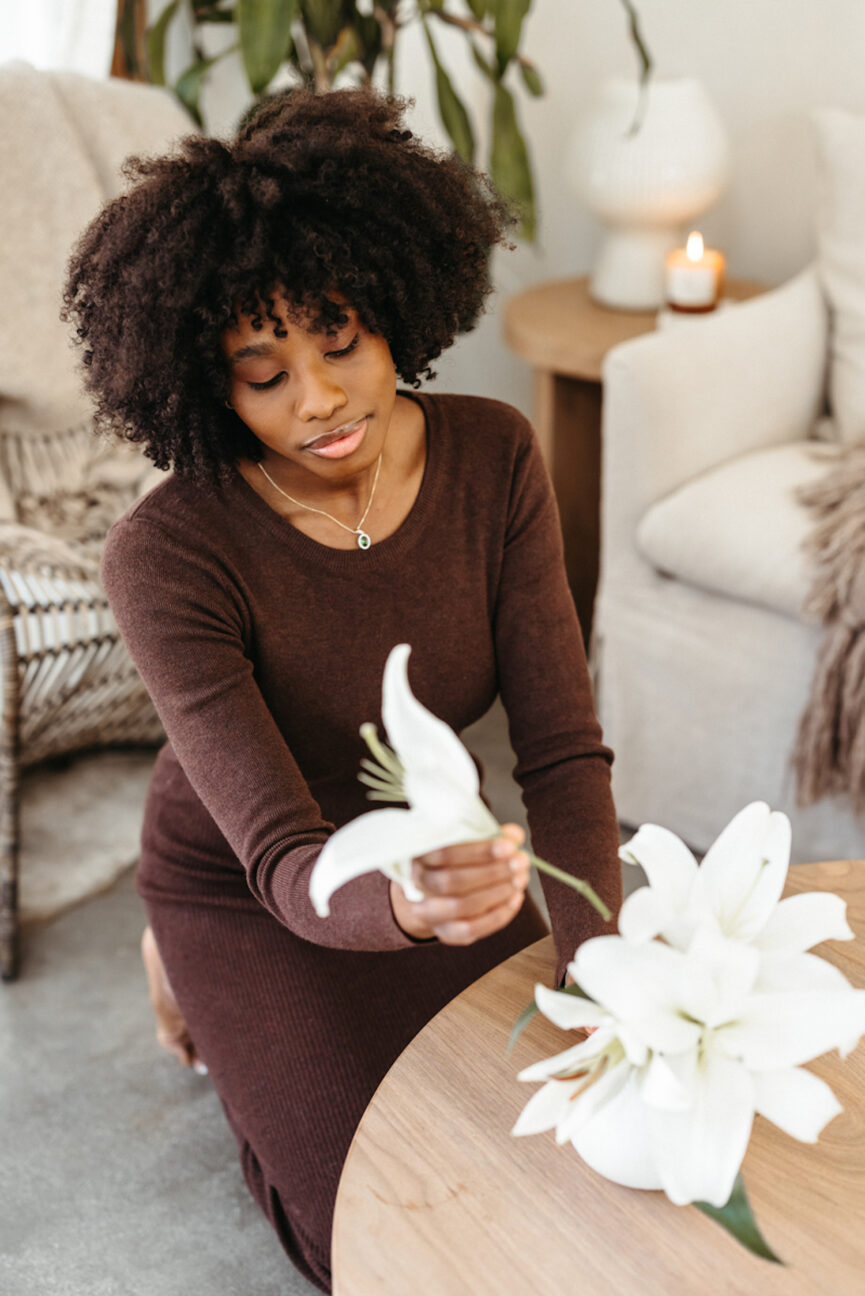
Cycle Syncing: What to Know
By now, you’ve probably heard of cycle or period tracking apps. I recommend CLUE, but almost any will do. You just need to know what your cycle looks like over a month.
Compare your cycle to the information below and start to figure out where and when you are in which phase. The most accurate results will come once you have three to four months of data.
Save our Cycle Syncing Guide below and support yourself with everything you need to know to feel your best throughout every phase of your cycle!
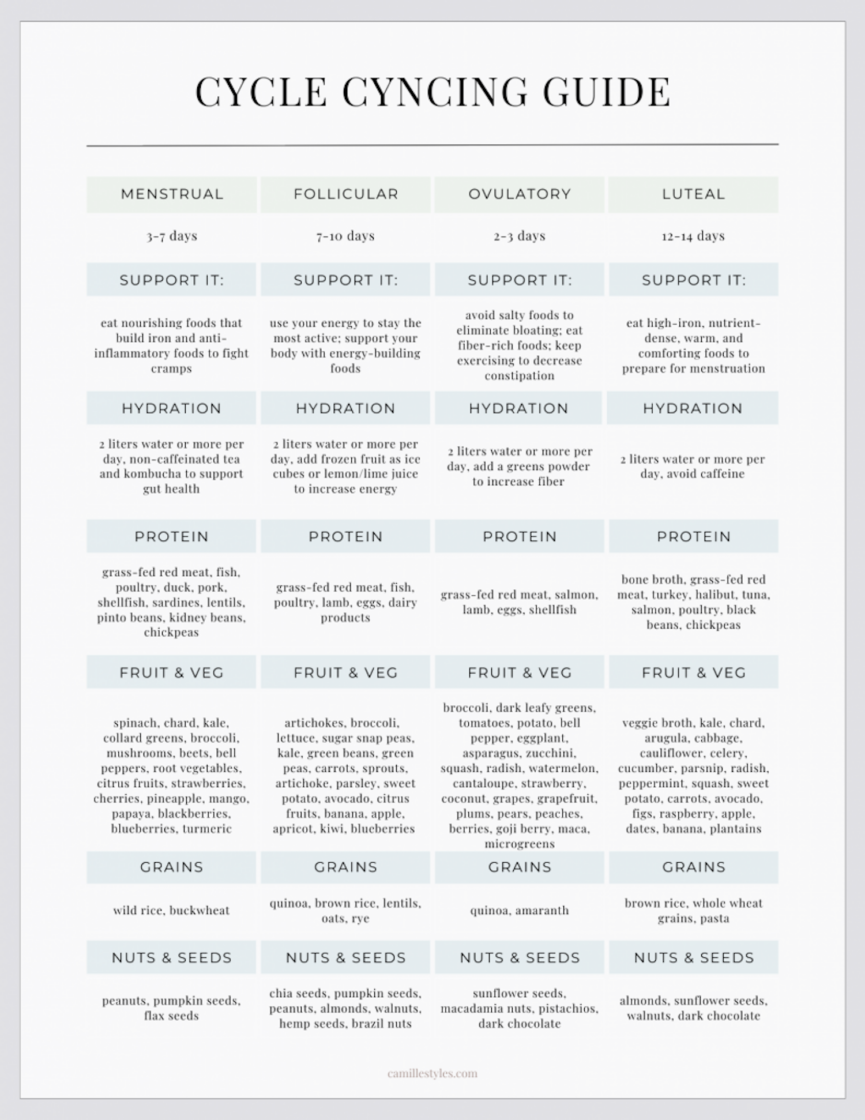
The Menstrual Phase (Day 1-5)
The lining of the uterus is shedding during the menstrual phase. Hormones are at an all-time low at the beginning of your cycle and begin to increase to more stable levels at the end of your period. You are losing blood and iron and prostaglandins (which cause cramping) are peaking. You typically feel more inward, slow, and restful.
What to Eat
Focus on nourishing foods that build iron, assist in iron absorption, and are anti-inflammatory to fight cramps. Drink the most water compared to the rest of your month here as you are losing hydration when you’re bleeding.
Hydration: Two liters-plus of water a day and lots of hydration through non-caffeinated teas. Add kombucha to help with your gut which can go haywire during menstruation.
Protein: Grass-fed red meat, fish, poultry, duck, pork, shellfish, sardines, lentils, pinto beans, kidney beans, chickpeas.
Fruit and Veggies: Spinach, chard, kale, collard greens, broccoli, mushrooms, beets, bell peppers, root vegetables, citrus fruits, strawberries, cherries, pineapple, mango, papaya, blackberries, blueberries, turmeric.
Grains: Wild rice, buckwheat.
Nuts and Seeds: Peanuts, pumpkin seeds, flax seeds.
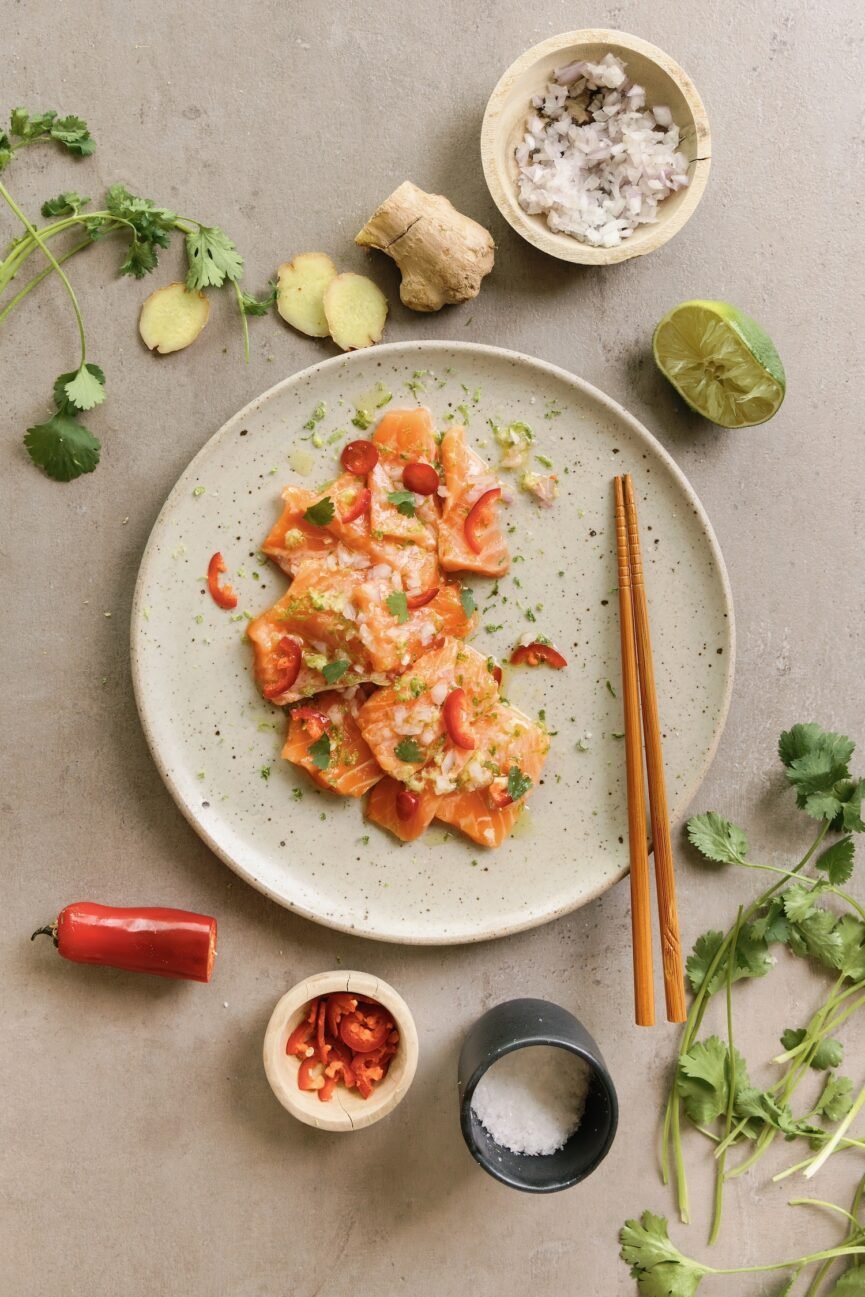
Menstrual Phase Recipes
Movement Tips
Explore low-impact workouts like walking, yoga, or pilates. If you’re wanting more intense workouts, strength training and HIIT are recommended.

The Follicular Phase (Day 6-13)
During the follicular phase, your body prepares an egg to be released. Estrogen and testosterone are peaking. You typically feel the most confident and full of energy as well as think and move quickly here.
What to Eat
Support your body with energy-building foods. Foods that pack plenty of vitamins and nutrients are the best here. Drink plenty of water to keep up with your lifestyle.
Hydration: At least two liters per day. Add frozen fruit or lemon or lime juice to your water to increase energy and give you an extra boost.
Protein: Grass-fed red meat, fish, poultry, lamb, eggs, dairy products.
Fruit and Veggies: Artichokes, broccoli, lettuce, sugar snap peas, kale, green beans, green peas, carrots, sprouts, artichoke, parsley, sweet potato, avocado, citrus fruits, banana, apple, apricot, kiwi, blueberries.
Grains: Quinoa, brown rice, lentils, oats, rye.
Nuts and Seeds: Chia seeds, pumpkin seeds, peanuts, almonds, walnuts, hemp seeds, Brazil nuts.

Follicular Phase Recipes
Movement Tips
Use your increased energy to work out your hardest and stay the most active. All types of movement are encouraged. If building muscle is your goal, focus on weight training and HIIT.
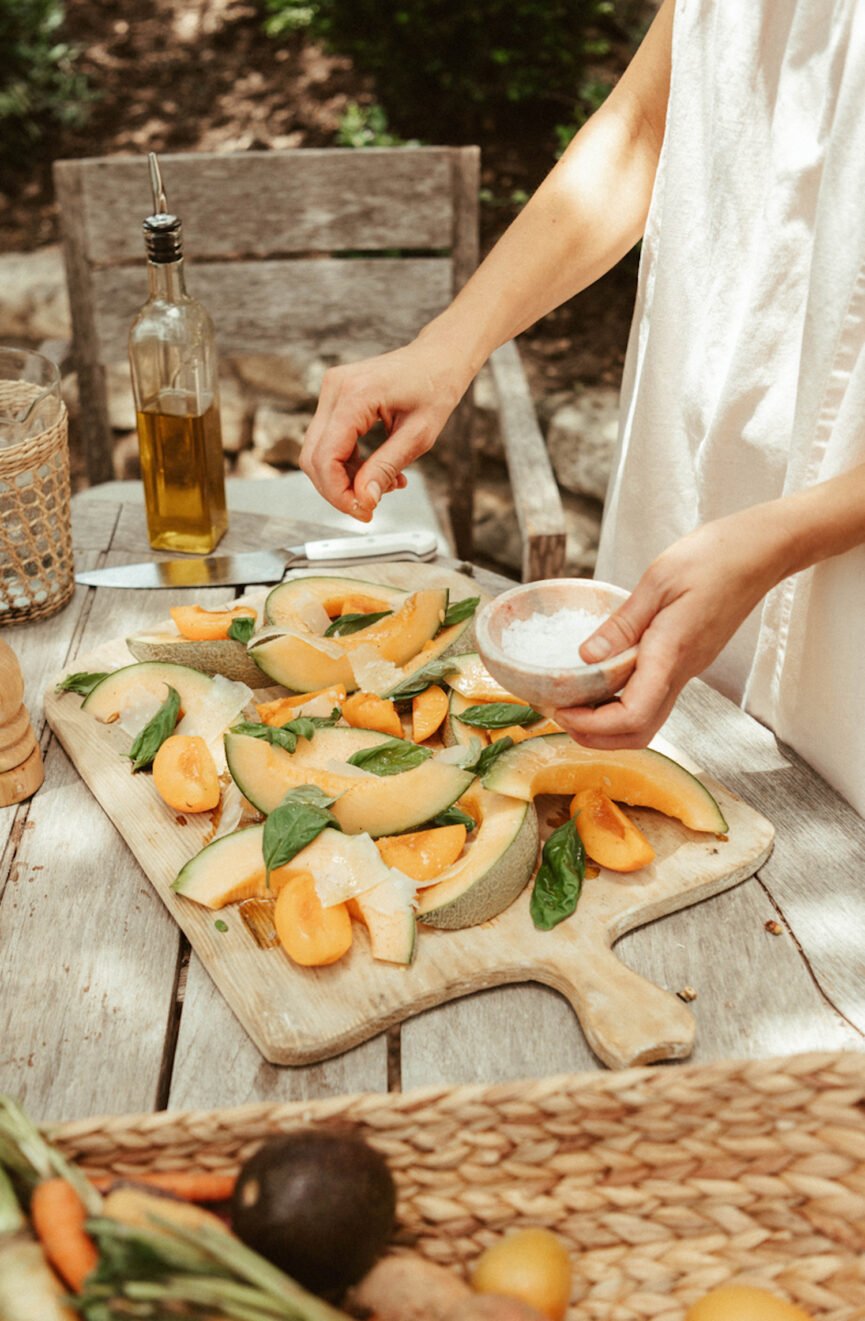
The Ovulatory Phase (Day 14)
During this phase, your body releases an egg into your fallopian tubes for fertilization. This phase begins with high levels of estrogen and testosterone giving you lots of flirty, outgoing, and social feelings. Directly after ovulation, progesterone is on the rise which causes you to feel a bit more sluggish, introverted, snuggly, and protective than normal. Water weight is easy to put on and constipation, cramps, or nausea is not uncommon with ovulation.
Listen to your body and track your cycle. When you know ovulation is coming, go out, have fun, and take advantage of these positive extroverted feelings. After ovulation, if you begin to feel less energetic, stay home, rest, and cozy up.
What to Eat
Avoid salty foods to eliminate bloating, boost your intake of fiber-rich foods, and prioritize hydration. Eating foods with high water content can help.
Hydration: Drink at least two liters per day, adding a greens powder to your water to increase fiber.
Protein: Grass-fed red meat, salmon, lamb, eggs, shellfish.
Fruit and Veggies: Broccoli, dark leafy greens, tomatoes, potato, bell pepper, eggplant, asparagus, zucchini, squash, radish, watermelon, cantaloupe, strawberry, coconut, grapes, grapefruit, plums, pears, peaches, berries, goji berry, maca, micro-greens.
Grains: Quinoa, amaranth.
Nuts and Seeds: Sunflower seeds, macadamia nuts, pistachios, dark chocolate.
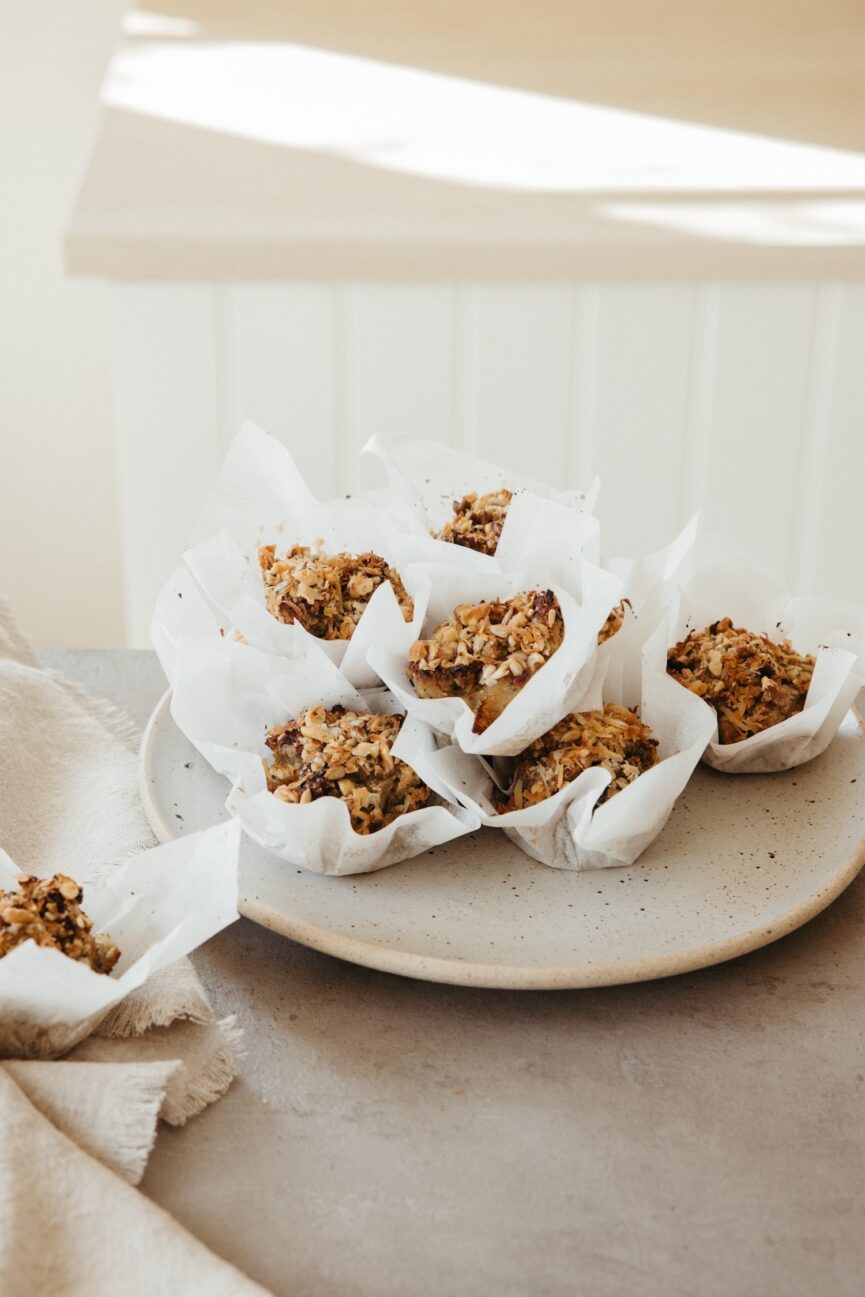
Ovulatory Phase Recipes
Movement Tips
Take advantage of the dichotomy of this phase by doing things to boost the energy you have in preparation for lower energy levels and to stave off constipation, bloating, and low energy. Running, spinning, weight-lifting, and high-impact exercises are all great ways to move during this phase. Note that prioritizing movement can help decrease constipation.
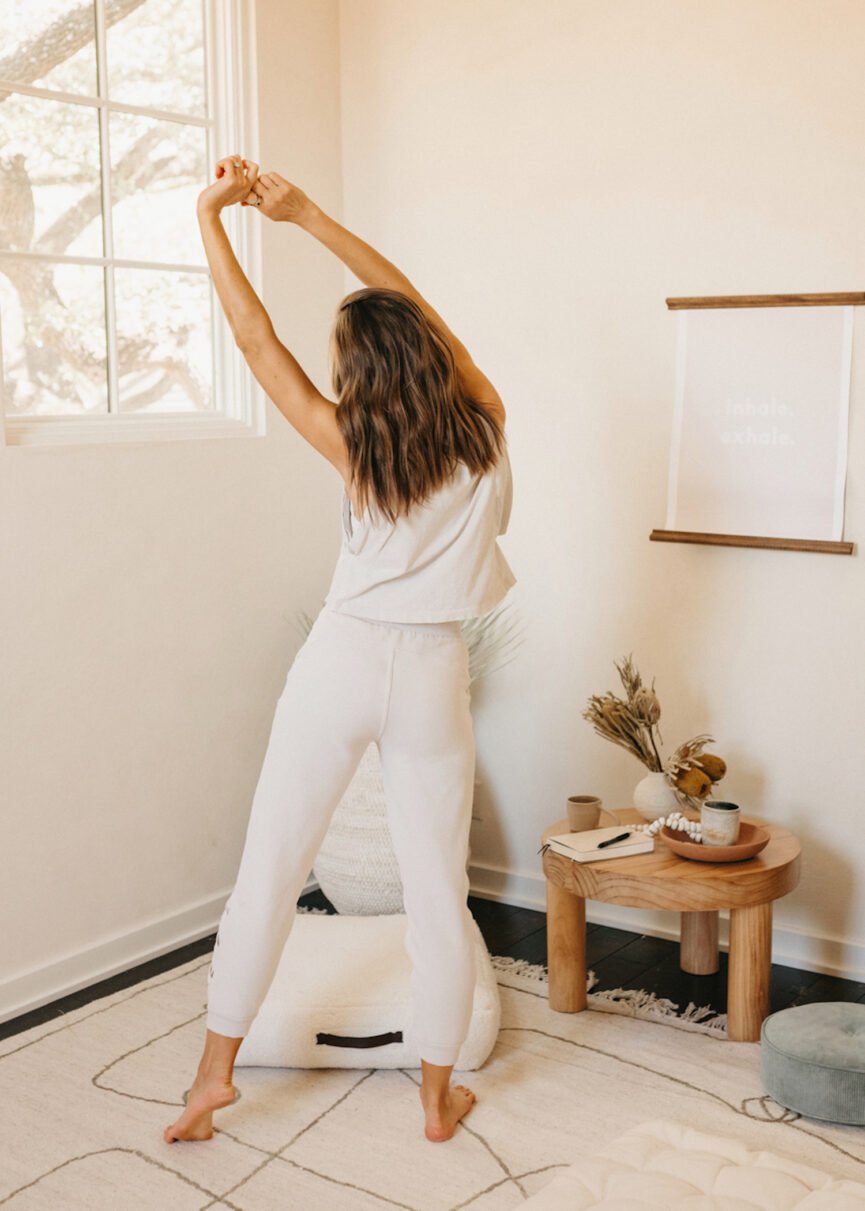
The Luteal Phase (Day 15-28)
In the case of a pregnancy, the luteal phase is when the egg is fertilized and prepares for attachment to the uterus. If a pregnancy is absent, the egg disintegrates and your body prepares to cycle again.
For the first four to seven days, you typically experience stable energy and mood that will slowly decline over the rest of the two weeks. If pregnancy doesn’t occur during this phase, your hormones take a big drop, often leading toward the most challenging feelings of the month. Think PMS symptoms. As estrogen drops, serotonin follows, causing you to feel a little bluer. With high levels of progesterone, you may experience cravings for fatty, high-carb foods and an increased appetite in general.
What to Eat
Again, listen to your body here. Enjoy the time you have in this phase before the hormonal swing hits. Give your body what it needs by indulging a little more than you normally would. Your body has these cravings for a reason—you’re preparing for menstruation. High iron, ultra-nourishing, and nutrient-dense foods are good. Warm, soft, and comforting foods are key.
Hydration: Drink two liters of water per day. Avoid caffeine and dehydrating yourself as this will make you feel worse.
Protein: Bone broth, grass-fed red meat, turkey, halibut, salmon, tuna, poultry, black beans, chickpeas.
Fruit and Veggies: Veggie broth, kale, chard, arugula, cabbage, cauliflower, celery, cucumber, parsnip, radish, peppermint, squash, sweet potato, carrots, avocado, figs, raspberry, apple, dates, banana, plantains.
Grains: Brown rice, whole wheat grains, pasta.
Nuts and Seeds: Almonds, sunflower seeds, walnuts, dark chocolate.
Luteal Phase Recipes
Movement Tips
Different types of movement align best with the early and late periods of the luteal phase. During the former, prioritize moderate intensity, cardio (kickboxing, running, and spinning), and longer workouts due to increased endurance during this phase. Continue to exercise during the late luteal phase, but as your energy levels decline shift to lower-impact movement like yoga and walking.
Final Thoughts on Cycle Syncing
Don’t forget: this advice is only meant as a guide. Adding these tips and foods can be helpful, but allow for flexibility and self-compassion in your life. Give yourself grace and kindness, and remember—tuning in and emphasizing self-love is the ultimate goal of cycle syncing.
Lifestyle
10 Items That Are Better Second-Hand

By no means do you need to buy all of your furniture and decor items brand new. In fact, you shouldn’t be doing so when you can save major cash (and help the environment!) by going the secondhand route. Plus, who wants their home to look just like everyone else’s? Finding furniture to thrift is a great way to differentiate yourself and showcase your personal style.
Below are 10 items that are better to buy at the thrift store. (That is, if you’re lucky enough to find ‘em.) While you most likely won’t come across all of these pieces in one go, you’ll want to add them to your long-term thrift shopping list!
Featured image from our interview with Claire Zinnecker by Michelle Nash.
Bar Carts and Barware
There’s nothing like a vintage bar cart to add character to your living or dining room. While there are plenty of stylish contemporary bar carts and cabinets on the market, I’ve found that vintage styles are always the most visually appealing and unique looking. Bonus points if you come across something brass with wheels to bring traditional European-inspired flair into your space.
Once you’ve found your perfect cart, keep your eyes peeled for vintage glassware and bar accessories, too. I’ve picked up some of my most favorite drinking vessels at thrift stores and love that they’re visually appealing yet not too precious. If a $4 wine glass breaks in the sink, it isn’t the end of the world.
Picture Frames
I don’t know about you, but I’m tired of seeing the same few mass-produced big box store frames in everyone’s homes. It doesn’t matter whether the art inside isn’t your style. If you look at the thrift store art section with the intention of sourcing great frames, your outlook will change entirely. My favorite types of frames to thrift for are ornate gold ones with beautiful carved detailing. You can still place a more modern piece of art inside for a nice juxtaposition.
Trays
I love a good thrifted tray. I have trays everywhere throughout my apartment. There’s one on my coffee table, another on my bar cart, a third on my dresser, and so on. All of these trays are fairly different in style but have each been secondhand finds. You really can’t go wrong when shopping for a tray, and there are so many different styles to choose from as far as material—whether you’re drawn toward something made out of wicker, glass, silver, or wood.
Don’t hesitate to grab a few trays in multiple sizes. A small one is nice on the nightstand, a larger one can keep daily products organized in the bathroom, and the list goes on and on.
Table Lamps
I am a bit of a lamp fanatic and can never resist looking at the different bases and shades for sale every time I visit a thrift store or flea market. Brand new lighting costs a pretty penny, so if you’re able to find even just a base that speaks to you and decide to order a new shade online, you’re still saving money. Note that some lamps, if they’re truly old, will need to be rewired. You will of course want to plug a lamp into an outlet (many thrift stores will allow you to do this) before bringing it home to double check that it works to your liking. Don’t forget that even the smallest of lamps can serve a purpose in your home. There’s nothing cuter than a petite lamp on a kitchen counter. It creates such a warm, welcoming vibe.
Books
My built-in bookshelves are filled to the brim with coffee table books of all kinds, and I’m proud to say that I’ve purchased at least half of them, if not more, secondhand. Every time I’m at the thrift store, I’ll make a beeline to the book section in search of titles that speak to me. Pro tip: If you’re not thrilled with a paper cover’s look or condition, take it off and see what the spine looks like underneath. Many books at the thrift shop unfortunately have covers that are torn or weathered, but I’ve been pleasantly surprised to find some awesome-looking spines that really pop on my shelf.
While I’ve found plenty of contemporary books at the thrift store, I love coming across vintage books about design, entertaining, and the like. These are so fun to flip through for inspiration, and they also add so much charm to any space.
Mirrors
No living room or bedroom is complete without a mirror. If your style leans Parisian, eclectic, or mid-century, you’ll want to head to the thrift store to find a mirror or two for your home. It’s always nice to be able to view a mirror in person before purchasing it in order to evaluate its quality. (Is the reflection distorted? Is it sizable enough for you to take OOTD photos?)
I love the idea of incorporating a thrifted mirror into the bathroom, too. In one of my past apartments, I was able to remove the bland medicine cabinet that was installed above my sink and chose to hang an ornate looking, thrifted mirror there instead. My bathroom looked so much more elegant as a result! Don’t shy away from a mirror with a bit of age to it, either. I love a bit of patina on a mirror,” says Sarah Horton, a content creator and vintage enthusiast. “It gives a piece that old world feel.”
Casegoods
Many people are of the belief that furniture was simply made better in the past, making it a key piece to look for when thrifting. Amy Courtney, the founder of Amy Courtney Design, agrees that case pieces including dressers, cabinets, and side tables should make it to the top of your secondhand shopping list. Such items are “often overlooked in thrift stores but can be real treasures,” she says. Plus, she adds, “Solid wood pieces with good bones can be refinished or repurposed to suit your style!”
Candlesticks
Laurie Jones always keeps an eye out for candlesticks, particularly brass ones, at the thrift shop. “Unlike the imitation brass they sell in stores today, vintage brass looks beautiful when polished or left in its natural patina,” says the founder of vintage store House 15. Plus, she notes, candlesticks can shine in truly any spot. “They can be used virtually anywhere in your home—the fireplace, dining room table or coffee table,” Jones says. “Don’t let finding just a single candlestick stop you from getting it.”
Vintage Oil Paintings
Get that museum-quality look for much, much less! “Vintage oil paintings are a great opportunity to have a unique, one of a kind piece of art,” Jones says. “The materials used and the frames tend to be better quality than mass-produced art today.” This tactic also makes it easy to own a one of a kind piece without the art gallery budget. Whether you lean a painting, display it on a gallery wall, or even prop it up on an easel is up to you.
Accent Chairs
Jones finds that thrifted accent chairs are a great buy. “They are cost effective and at the same time superior in their craftsmanship for their price,” she says. “Finding one with a fun fabric adds character and a one-of-a-kind piece for your room. It’s a piece you can keep for years and can easily be refreshed by reupholstering.” Even if you don’t stumble upon a pair, a single chair is still worth bringing home, by no means does everything in your space need to be matchy-matchy.
Lifestyle
How to Increase Female Libido: A Sex Expert Responds

In the real world of sex, getting in the mood isn’t always as effortless as it looks in the movies. (Much like most things in life.) Maybe your once-electric sex life has dimmed, or perhaps it’s been a slow fade that you can’t quite pinpoint. Whatever the case, it’s helpful to know how to increase female libido and get back to feeling like yourself again.
First things first: a lower libido doesn’t necessarily mean there’s anything wrong with your relationship. We can be content in a wonderful partnership and happy with our lives, yet still find ourselves wondering why our sex drive seems to have taken a vacation. And while it’s not a topic we often discuss openly, it’s actually pretty common. If you’re experiencing low libido, know that it’s completely normal, healthy, and OK. Let’s dive into what might be happening and explore how to reignite that spark.

Lauren Zielinski, MSN, CNM
Lauren Zielinski is a certified nurse-midwife with over 11 years of experience in women’s health and birth. She studied medicine at The University of Colorado-Denver with a focus on community health and birth center work.

What’s “normal” when it comes to my libido?
We’re all unique—and our sex drive is, too. Libido varies from person to person, and it’s influenced by a mix of factors like age, hormones, and the dynamics of your relationship. So, what’s considered “normal” is really up to you and how you feel about your own sex drive. It’s important to remember that low libido only becomes a concern if it’s causing distress, affecting your quality of life, or creating a significant mismatch with your partner’s desires.

Common Culprits Behind a Low Libido
In many cases, it’s not that your libido is “low” in a clinical sense, but perhaps it’s just not syncing up with your partner’s. This is where communication, compromise, and maybe even couples therapy can be helpful. Want to dig deeper into what might be affecting your libido and how to give it a boost? Let’s get into it.
Medications
Certain medications can have a surprising impact on your sex drive. The most well-known are antidepressants, particularly SSRIs (like Zoloft, Prozac, and Lexapro), and hormonal birth control, such as the pill, ring, patch, or shot. These medications can alter your hormones in ways that might dampen your libido. It’s not something everyone experiences, but if you’ve noticed a change, it’s worth discussing with your healthcare provider.
Pro Tip: The hormonal IUD (like Mirena or Skyla) or the copper IUD are less likely to affect your sex drive, so they could be worth considering if you’re looking for alternatives.
What to Do: If you suspect your medication is affecting your libido, don’t make any changes on your own—talk to your provider about your concerns. Sometimes, adjusting the dosage or switching to a different medication can make a big difference. It’s all about finding the right balance for your body and your needs.

Mental Health
Your mental health is deeply intertwined with your sexual desire. Depression, anxiety, and other mental health conditions can zap your energy and leave you feeling disconnected from your partner. Dr. Frederick K. Goodwin, a renowned expert in psychiatry, explains that “the whole process of sexual arousal starts with the ability to anticipate pleasure, which is lost with depression.”
What to Do: Getting back on track might involve therapy, medication, or a combination of both. Open communication with your partner about your needs and expectations can also ease some of the pressure and help you feel more confident as you work toward better mental and sexual health.

Stress
Stress is another big libido killer, and it’s something we all deal with. When you’re stressed, your body goes into “fight or flight” mode, releasing stress hormones like cortisol that can throw your sex hormones out of whack. It’s your body’s way of saying, “This isn’t the time for pleasure—we’ve got bigger things to worry about!”
What to Do: If stress is taking a toll on your sex drive, it’s time to activate some serious self-care. Drop a few non-essential commitments, carve out time for yourself, and remember that it’s okay to say no. The better you feel, the more likely you are to get in the mood.
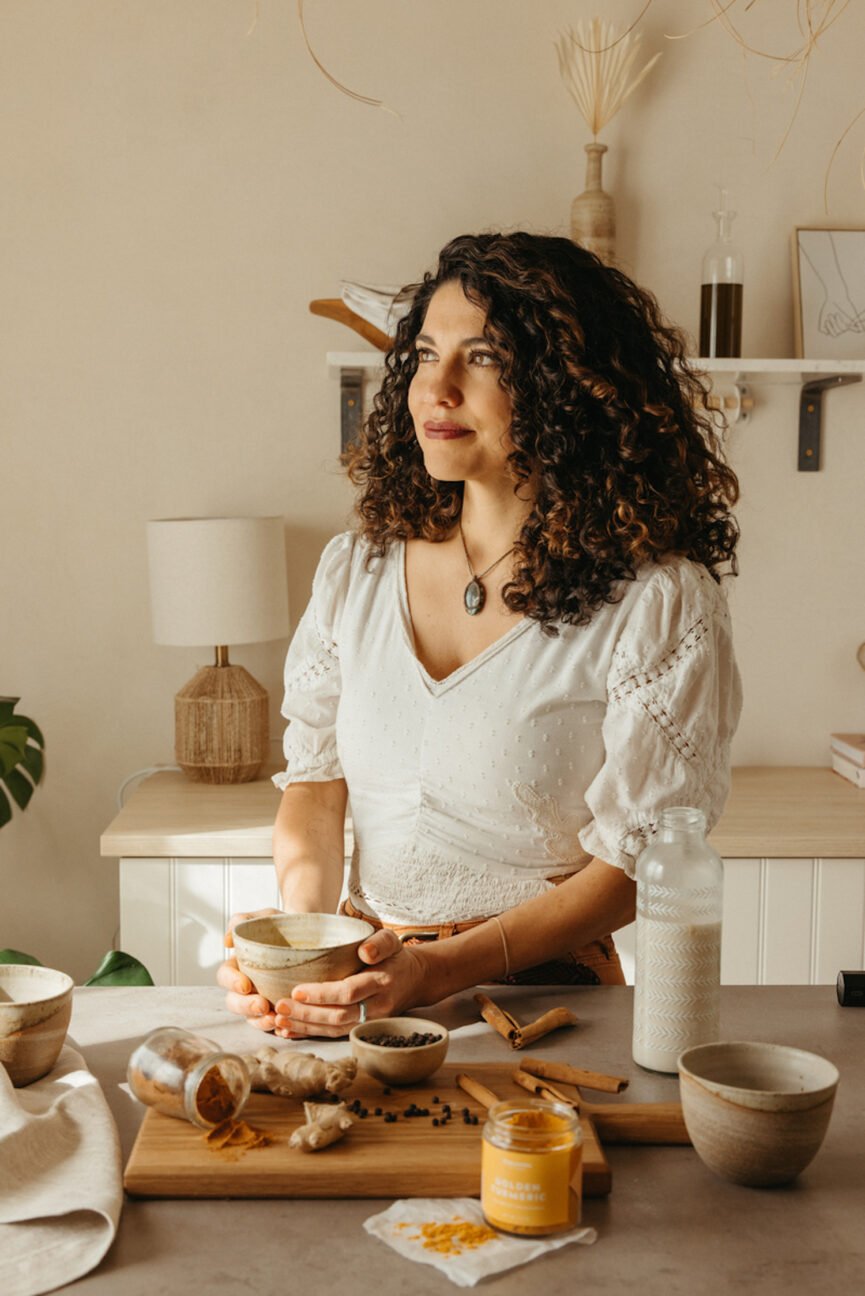
Tips and Tricks for How to Increase Female Libido
Turmeric
From a taste and functional health perspective, turmeric is one of the best spices in the game. Turmeric contains a compound called curcumin, which has been shown to increase testosterone levels—a key hormone for boosting libido in both men and women. Whether you add it to your cooking (we’re obsessed with golden milk) or take it as a supplement, turmeric can help turn up the heat.
Pro Tip: Make sure your turmeric supplement contains at least 1000 mg of turmeric and includes black pepper, which helps your body absorb the curcumin.
Exercise
Movement is medicine, and that goes for your sex drive, too. Regular exercise improves heart function, blood flow, and overall well-being—all of which contribute to a healthier libido. You don’t have to be a fitness fanatic to reap the benefits; even a 30-minute daily workout can make a difference. And bonus: having sex after exercise can lead to stronger orgasms thanks to increased blood flow.
Read more: A Trainer Swears By Low-Impact Exercise—Steal Her Weekly Workout Split
Kicking Bad Habits
Smoking, excessive alcohol, and recreational drugs can all interfere with your libido by disrupting sleep, circulation, and brain function. If you’re regularly indulging in these habits, consider cutting back or quitting altogether. You might be surprised at how much more vibrant and alive you feel—both in and out of the bedroom.
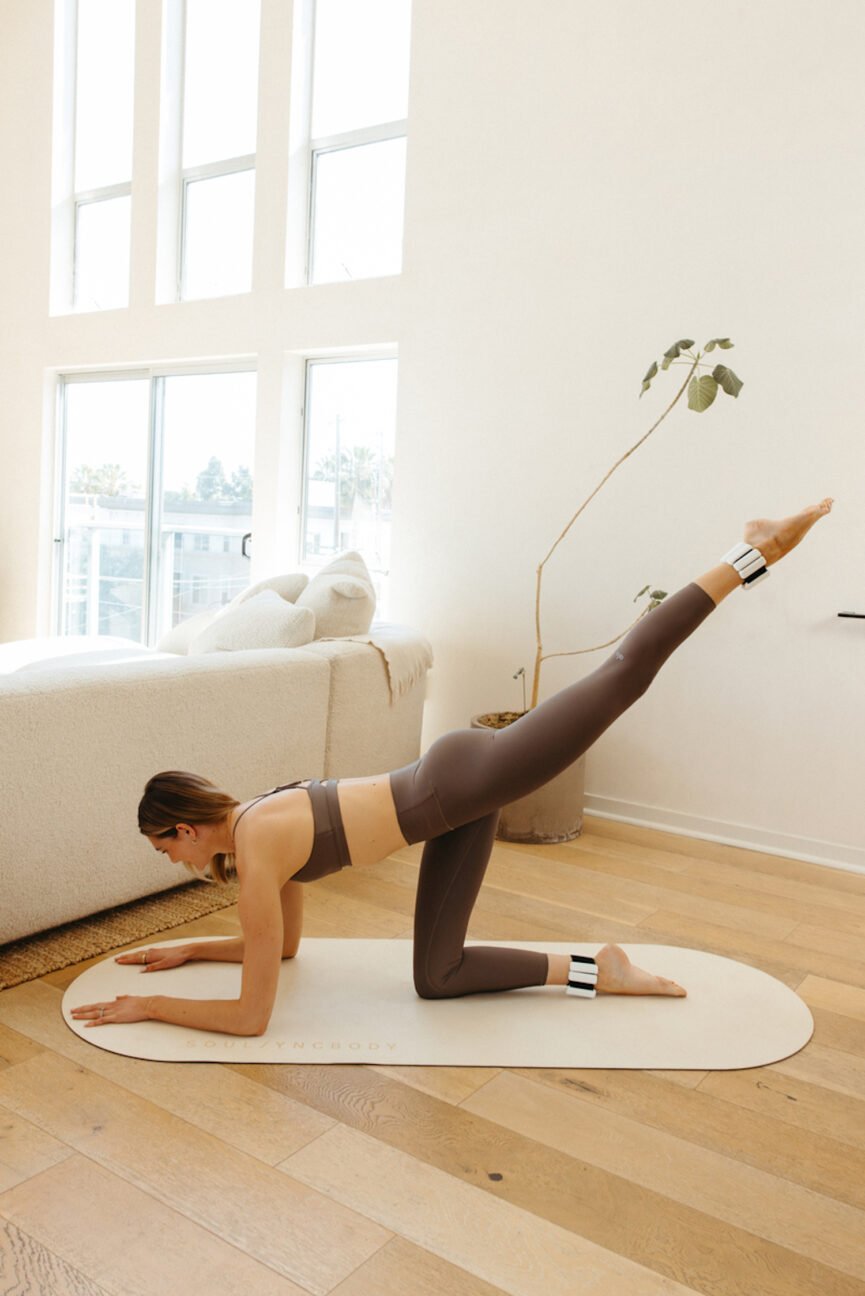
The Takeaway
Your libido is a key part of your overall well-being, and it’s worth taking the time to nurture it. If you’re struggling, don’t hesitate to reach out to a healthcare provider or sex therapist for more personalized advice. Remember, sex is a natural and beautiful part of life, and everyone deserves to feel comfortable and fulfilled in their own skin. So go ahead, embrace the journey, and enjoy the ride!
Read more about nurturing your sexual wellness:
-

 African History5 years ago
African History5 years agoA Closer Look: Afro-Mexicans 🇲🇽
-

 African History7 months ago
African History7 months agoBlack History Facts I had to Learn on My Own pt.6 📜
-

 African History5 years ago
African History5 years agoA Closer Look: Afro-Mexicans 🇲🇽
-

 African History1 year ago
African History1 year agoMajor African Tribes taken away during the Atlantic Slave Trade🌍 #slavetrade #africanamericanhistory
-

 African History1 year ago
African History1 year agoCameroon 🇨🇲 World Cup History (1962-2022) #football #realmadrid #shorts
-

 African History1 year ago
African History1 year agoWhat did Columbus Find in 1493? 🤯🔥🔥 #history #civilization #mesoamerica #africa #kemet
-

 African History7 months ago
African History7 months agoBlack History Inventors: Mary Kenner 🩸
-

 African History1 year ago
African History1 year agoOrigin Of ‘Cameroon’ 🇨🇲😳#africa


